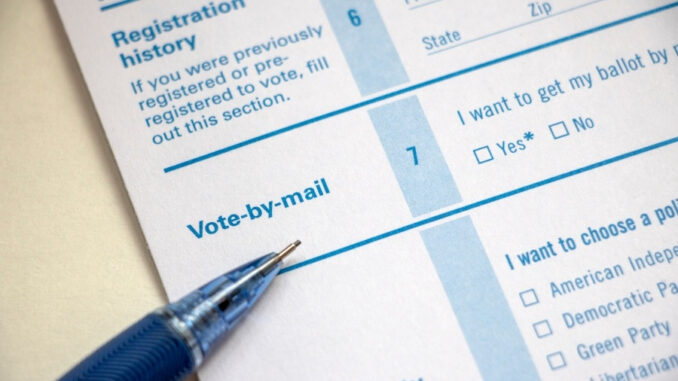
Zoe Stratos | Staff Columnist
As the 2020 presidential election draws near, questions of where and how to vote are rising amid the COVID-19 pandemic. Although rarely used in the past, states are now pushing for universal mail-in voting rather than in person at the polling booths to keep the inclusivity and accuracy of the elections intact.
However, as with any major change within our democracy, there is a partisan debate regarding the legitimacy of mail-in voting between citizens and even government officials — including President Donald Trump.
The main points of the debate surround the increasing chances of voter fraud or tampering of votes by foreign actors. Right on cue, President Trump joined the Twitter conversation with an onslaught of tweets calling 2020 the “most INACCURATE & FRAUDULENT Election in history” while simultaneously opposing further funding to the U.S. Postal Service and ultimately preventing mail-in voting.
It is important to note that President Trump has no issue with absentee voting — only the mail-in method — as stated in one of his tweets. So as voters, we have to know the difference (or lack thereof) between the two methods of voting.
Absentee ballots are submitted by mail from an absentee. An absentee is a person who physically cannot go to a polling booth, whether it be because of military deployment or because the voter will not be in his or her registered state during the election. Moreover, the absentee ballot cannot be given to anyone; there has to be a reason. The voter must then request and be accepted to use the ballot through his or her state government.
Where the area becomes gray is the method of submission after this approval. Both absentee ballots and mail-in ballots are submitted through the mail, of course — and very rarely through fax, for absentees.
Furthermore, 29 states and the District of Columbia allow no-excuse absentee ballots, which are essentially no different from mail-ins. Pushing the boundaries even further, some of these states even refer to these no-excuse absentee ballots as mail-in ballots.
Circling back to the debate at hand: In the past, there has been no evidence of substantial mail-in voter fraud. According to a study from the Heritage Foundation, over 250,000,000 million votes have been cast by mail, and there have only been 1,285 proven cases of voter fraud.
Furthering the legitimacy of mail-ins, five states already transferred to a method referred to as ‘all-mail voting’ in previous elections. Although not mandatory, citizens in these states vote primarily by mail, beginning with Oregon who first made the shift back in 1981.
Since then, Washington, Colorado, Utah and Hawaii followed suit with no substantial qualms from opposition or presidential candidates. These states even went as far to contemplate defunding the Postal Service.
However, mail-ins have never been the primary method of voting. Skepticism is warranted, but condemnation of the voting method is not the solution, either. With that said, there is no foolproof approach to stop the argument against mail-in ballots, regardless of past experience.
Fortunately, states were given what could be considered a “trial run” during primary season; and for the most part, mail-in voting went well.
On the other hand, certain states ran into trouble — including New Jersey and Pennsylvania. In New Jersey, investigations show that nearly 10% of mail-in votes went uncounted; and in Pennsylvania, thousands of absentee votes went uncasted or uncounted as well, according to the New York Times.
As a result of the state blunders, President Trump and allies put their mistakes on a pedestal, claiming these mishaps during the primaries will be amplified during the presidential election in November. In a tweet, President Trump emphasized this point in stating, “Rigged Election. I told you so. Same thing would happen, but on massive scale, with USA.”
There’s no downplaying what happened in these states; the elections weren’t as accurate as they could — and should — have been.
With the evidence from all-mail voting states, though, the state governments are capable of running a safe and accurate election. They must work overtime to equip themselves with the proper equipment and tracking software to ensure legitimacy.
What’s arguably more alarming is President Trump’s bold statement to oppose the funding of the U.S. Postal Service. President Trump admitted that he wanted to decrease funding for the sole reason of preventing fraudulent voting.
What the president fails to realize is that pulling funds from an entity designed to connect the United States first, and make profit second, will largely hurt them not only now but also in the future.
The Postal Service is written into the Constitution to help connect the American people, just as the U.S. Military is written into the Constitution to defend the American people.
These entities are here for our benefit, not their profit, and we as Americans have the right to vote — in whichever method need be.
